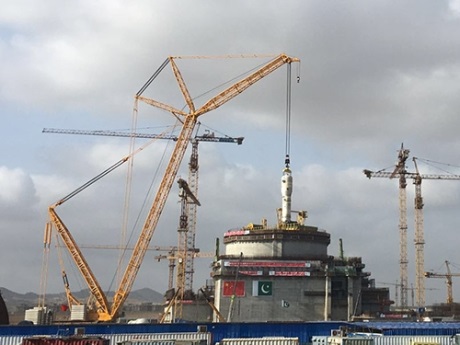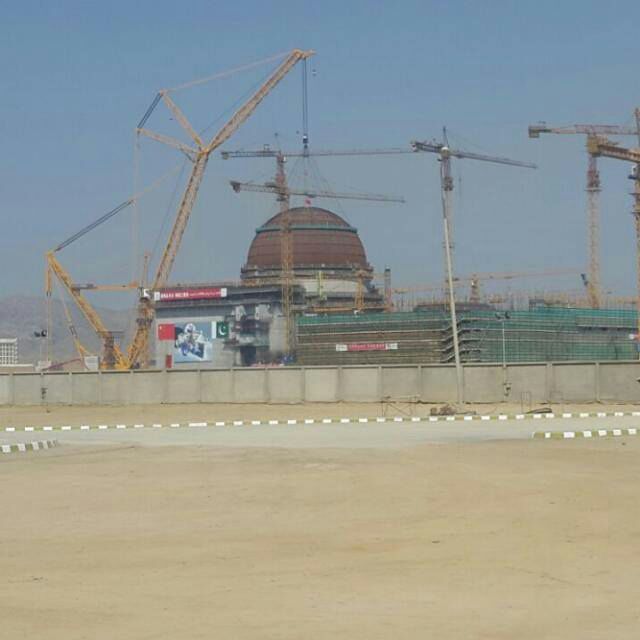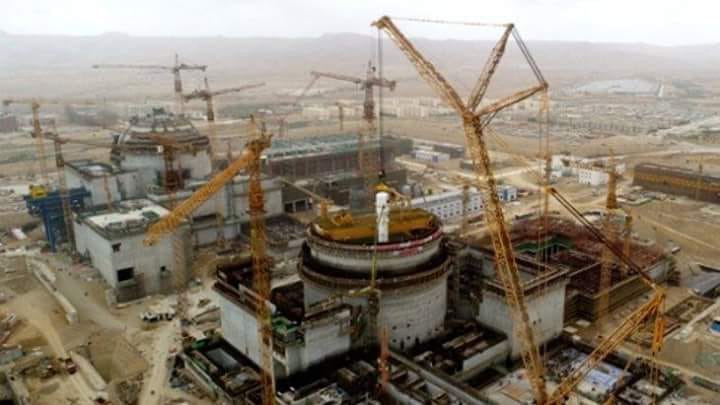Karachi nuclear power plants heavily protected:
IAEA chief Yukiya Amano
KARACHI: International Atomic Energy Agency (IAEA) Director General Yukiya Amano has praised the arrangements made for the security of nuclear power plants operating in Karachi.
Mr Amano, who visited the plants on Wednesday, said that the new Kanupp II and III “plants are very heavily protected. Your country needs more electricity and you are committed to nuclear safety; you are working with the IAEA”.
“The IAEA greatly values cooperation with Pakistan in peaceful uses of nuclear technology,” he said.
Amano says nuclear power should not be limited to developed nations
He stated that access to nuclear power should not be limited to developed countries as developing states should also have the right to use atomic power.
“Your country is an experienced user of peaceful nuclear technology. You have the knowledge; you have the pool of well-trained people to do their job. We [IAEA and Pakistan] have a fruitful two-way relationship,” said the IAEA chief while addressing a seminar.
“I come to your country to share latest priorities of IAEA. In the public’s mind IAEA prevents [the spread of] nuclear weapons. But IAEA’s work covers other scientific issues as well,” said Mr Amano, detailing everyday uses of nuclear technology in sectors such as industry, agriculture, etc. In a lighter vein, he said he enjoyed Pakistani mangoes treated by nuclear technology.
The seminar titled ‘The Peaceful Uses of Nuclear Energy and Pakistan’ was organised at a hotel jointly by the Centre for International Strategic Studies (CISS) and the Pakistan Institute of International Affairs (PIAA).
The IAEA chief said that while his organisation is known as a global nuclear watchdog, he is motivated by the body’s new motto: atoms for peace and development. “Our focus is to transfer knowledge and technology, especially to developing countries. Nuclear power is an important area of cooperation between Pakistan and IAEA,” he said, while adding that other areas include food safety and food production.
He observed that nuclear technology can help in food safety processes and the export of livestock.
“Induced mutation technology helps accelerate mutation in food products. This is widely used in your country. All countries are suffering from climate change; in order to address climate change mutation technology is very important.”
Mr Amano said that cancer is an important focus of IAEA.
“Asia has the highest burden of cancer in the world. The trend is rising. Sadly, Pakistan is no exception. Quite often women are the victims. We need to do something in this area. You are much more advanced than certain countries. Training of medical professionals is at the heart of what we do.” He said that a new project was being launched focusing on radiotherapy and cancer treatment in the country.
“Energy is indispensible for development. Nuclear power can help address challenges. It’s incontestable that nuclear is low-carbon energy. Without nuclear power targets of the Paris Agreement cannot be achieved. People are worried about the future of nuclear power. We see steady growth of nuclear power. We need to address climate change; nuclear power is one of the very effective responses. I believe in the future of nuclear power but I recognise the differences [in opinion over use of atomic energy] before and after the Fukushima accident.”
Shifting centre of nuclear power
The IAEA chief observed that the centre of nuclear power was moving from the global North to the South, from Europe to Asia, to China, India, and Pakistan. He said the UAE, Bangladesh, Turkey, Egypt and Saudi Arabia were all considering or have already started work on civilian nuclear power projects. “Access to nuclear power should not be limited to developed countries; developing countries should also have access.”
He added that if countries opt for nuclear power, IAEA helps them use it safely and sustainably
During the welcome remarks, CISS executive director Ali Sarwar Naqvi pointed out that this was Mr Amano’s second visit to Pakistan. He said Pakistan has had a relationship with IAEA since the 1950s. “The relationship has been mutually beneficial,” he said, adding that Dr Abdus Salam’s statue was unveiled in Vienna by Mr Amano last year.
PIIA chairperson Masuma Hasan introduced Mr Amano.
Dr Zafar Ali, Director General Security Division, Ministry of Foreign Affairs, said that all civilian facilities in Pakistan are under IAEA safeguards in perpetuity.
“Pakistan has offered to share experience and expertise with other states under IAEA auspices. We are willing to share our best practices in non-proliferation. Pakistan gives highest importance to nuclear safety and security. No pilferage or theft of nuclear material has ever happened in Pakistan.”










